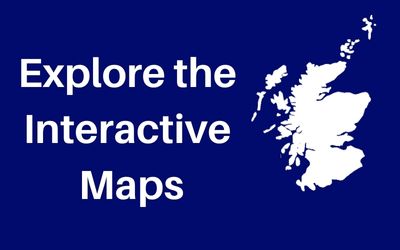Scottish Government and Fisheries Management Scotland have published the outputs of a project that assesses the geographic distribution and relative importance of the factors, or “pressures”, thought to be impacting on wild Atlantic salmon. This work has been summarised in a national report and the data are available to view at catchment, regional and national scales in an interactive story map and on an R Shiny App.
The publication of this work follows on from the recent launch of the Wild Salmon Strategy Implementation Plan which sets out the actions to be taken over the next five years with the ultimate aim of protecting and restoring wild salmon populations. This assessment of pressures, along with the work underway to develop fisheries management plans, will help guide delivery of the Plan going forward.
Why has this work been undertaken?
Wild salmon populations are in decline across Scotland. The likely reasons for their decline are complex, and vary among rivers. There is a need to describe the likely impacts of different pressures and how they vary across Scotland so that appropriate management actions can be taken. This programme of work was commissioned to help fill some of these knowledge gaps and inform proportionate and necessary actions.
Who has undertaken the work?
The project was managed by Fisheries Management Scotland and delivered by Rivers and Fisheries Trusts and District Salmon Fishery Boards across Scotland, who populated an online geographical information system (GIS) with information on pressures. Marine Scotland developed approaches for summarising and presenting the data.
How were the data collected?
Assessing the impacts of pressures is a complex task; assessments were made using a wide range of evidence including peer-reviewed scientific publications and population assessments. In 2019, for each region, local fisheries biologists and fisheries managers used such information alongside their expert judgement to assess the pressures. The level of confidence in the assessments was also recorded. A high-level review of the general approach and summary data for the whole of Scotland was undertaken by a Technical Working Group.
The project was supported by a grant from the European Maritime and Fisheries Fund and technical inputs from the Scottish Fisheries Coordination Centre and Marine Scotland Science. The pressure mapping work was updated, refined and refreshed in spring 2021 with financial support from the Scottish Government.
What does this project tell us?
This project presents the first national summary assessment of the pressures acting on wild Atlantic salmon in Scotland. The data provide a baseline against which to compare changes in assessments over time. The overall dataset also highlights those combinations of pressure and region for which local managers believe there to be a particular need for improved evidence and understanding. Overall, the information collected will inform policy development and management of pressures on wild salmon.
For each pressure, this report tells us where local fisheries managers think there is an impact, how severe the effect is thought to be and whether it is increasing, decreasing or stable. The relative importance of different pressures can be determined at a range of spatial scales (e.g. watershed, regional, national) by summarising the available information.
There are clear regional differences in most pressures, with considerable variation in the relative importance of specific pressures in different parts of Scotland.
This work provides a snapshot of our best understanding of likely pressures at a point in time. However, it is important to note that the assessments were undertaken in 2019 and refreshed in 2021. Since then, new evidence has become available including improved understanding of genetic introgression, the threats posed by climate change and water scarcity and spatial variability in water quality.
It is important we use the best available information to take appropriate action on the ground. Ongoing scientific work will refine our understanding over time, but urgent management actions are required now to conserve wild salmon. This is in line with the need to step up the pace and scale of action to address pressures as outlined in the Scottish Wild Salmon Strategy.
Has this approach been taken elsewhere?
The rationale, methodology and visualisation of data used in this report are similar to those used in peer reviewed and published studies from Norway, England and other countries.
Taking a similar approach in Scotland allows us to make comparisons with other countries. This will facilitate collaboration with international partners on best practice for managing salmon. Many of the pressures that affect salmon in Scotland are also present elsewhere.
What will we do with the findings of the project?
The Scottish Government has recently published the Wild Salmon Strategy Implementation Plan The delivery of this plan will be overseen and directed by a Delivery Group made up of a wide range of stakeholders. The Delivery Group will use the best available data – which will include the outputs of this project – to guide their discussions and to prioritise practical management action.

